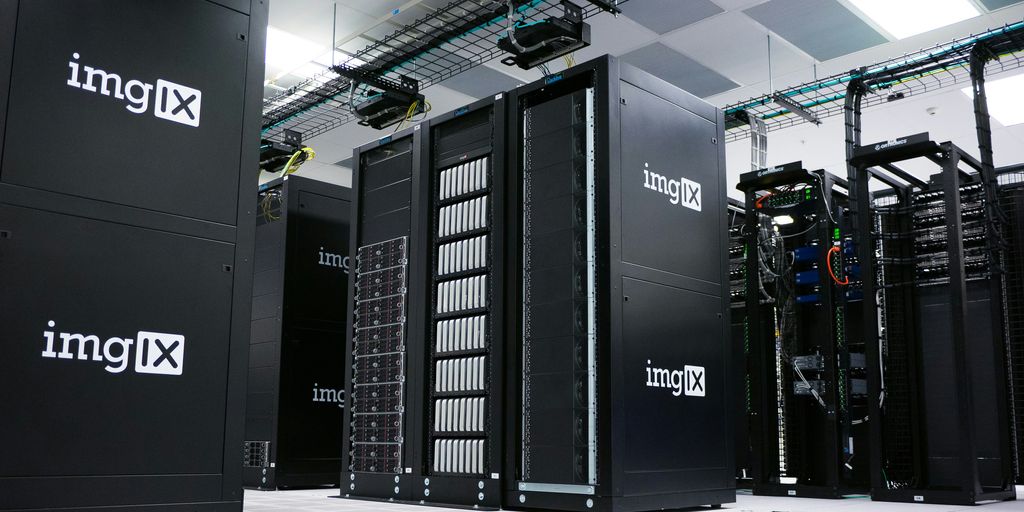Picking the right storage for your business can feel like a big deal, especially with all the data we deal with these days. Amazon S3 has been a leader in cloud storage for a while, known for being super reliable and growing with your needs. But lots of businesses are now checking out other s3 compatible storage providers. These options give you the good parts of S3’s system but let you keep more control and stay flexible. This article will look into what s3 compatible storage providers are, why they’re helpful, and some of the best ones out there.
Key Takeaways
- S3 compatibility means a storage system acts like Amazon S3, so your apps can use it easily.
- Using s3 compatible storage providers can help you save money and avoid being stuck with just one vendor.
- When choosing, think about how fast it is, how much it can grow, and how safe your data will be.
- There are many s3 compatible storage providers, including ones you can run yourself, cloud options, and mixed systems.
- Planning for data movement and future needs is important for a good storage strategy.
Understanding S3 Compatible Storage Providers
Defining S3 Compatibility
Okay, so what is S3 compatibility anyway? Basically, it means a storage system can work with tools and applications designed for Amazon S3. Think of it as speaking the same language. This lets you use different storage providers without having to rewrite all your code. It’s pretty handy. S3-compatible object storage makes life easier.
Benefits of S3 Compatible Storage
Why bother with S3 compatible storage? Here’s a few reasons:
- Easy Migration: Moving data from Amazon S3 to another S3-compatible system is much simpler. You don’t need major changes to your setup.
- No Vendor Lock-In: You’re not stuck with one provider. If another one has better pricing or features, you can switch more easily.
- Cost Savings: S3-compatible storage often comes with competitive pricing. This can help you cut down on storage expenses. It’s always good to save money.
- More Control: Many S3-compatible options give you extra control over your data and security. This is important for compliance and keeping your information safe.
Why S3 Compatibility Matters for Your Business
In today’s world, businesses need to be flexible. S3 compatibility gives you that flexibility when it comes to storage. You can adapt to changing needs and avoid being tied to a single vendor. Plus, it lets you use a wide range of tools and services that already work with S3. This can save you time and effort in the long run. Choosing the right storage provider is important.
Key Considerations for Choosing S3 Compatible Storage Providers
Picking a storage provider feels like a big deal, because it is. It’s not just about finding a place to dump your files. You have to think about how it will grow with your business and keep your data safe. Let’s break down what you really need to look at before you sign up with anyone.
Evaluating Performance and Scalability
Performance isn’t just about speed. It’s about how quickly you can get your data when you need it and how well the system handles lots of requests at once. You’ll want to look at things like latency (how long it takes to start a data transfer) and throughput (how much data you can move in a certain time). Scalability is another big one. Your data needs will probably grow, so you need a provider that can grow with you without slowing down. It’s not just about adding more terabytes; it’s about the system’s ability to fully support AWS S3 operations as your workload increases.
When you’re checking out providers, ask about:
- Read/write speeds for different object sizes.
- How they handle peak traffic loads.
- Their architecture and if it allows for horizontal scaling.
- Any performance guarantees they offer in their service level agreements (SLAs).
Assessing Data Security and Compliance
This one is a no-brainer. You can’t afford to have your data compromised. You need to check what security measures a provider has in place. This goes beyond just a password. Think about who can access the data and how that access is controlled. If your business handles sensitive information, you also have to worry about industry rules.
Key security points to verify:
- Encryption: Is data encrypted both while it’s being transferred and while it’s stored?
- Access Control: Do they offer detailed identity and access management (IAM) features?
- Compliance Certifications: Do they meet standards relevant to your industry, like HIPAA for healthcare or GDPR for European customer data?
- Audit Logs: Can you track who accessed what data and when?
Understanding Pricing Models and Cost Optimization
Pricing can be tricky. A low per-gigabyte price might look great, but the final bill can be a lot higher once you add in all the other fees. It’s the hidden costs, like charges for data retrieval and API requests, that often catch people by surprise. You need to understand the entire pricing structure before you commit. Some providers charge you every time you pull data out, which can get expensive fast if you have an active application.
Here’s a simple look at how different costs can add up:
| Cost Factor | Provider A | Provider B |
|---|---|---|
| Storage (per TB/month) | $5.00 | $7.00 |
| Data Egress (per TB) | $10.00 | $0.00 |
| API Requests (per million) | $0.50 | $0.00 |
As you can see, Provider A looks cheaper for storage, but if you move a lot of data, Provider B might actually save you money. Always try to model your expected usage to get a real sense of the total cost.
Top S3 Compatible Storage Providers for Business
Leading On-Premise S3 Compatible Solutions
When you want to keep your data close, on-premise S3 compatible storage is the way to go. It gives you control and can be a good fit if you have specific compliance needs or want to minimize latency. These solutions let you manage your storage infrastructure directly.
- MinIO: A popular choice known for its high performance and scalability. It’s software-defined, so you can run it on various hardware configurations.
- Ceph: A distributed object store that provides excellent redundancy and scalability. It’s more complex to set up than MinIO but offers a lot of flexibility.
- Cloudian HyperStore: This option is designed for large-scale deployments and offers multi-tenancy support. It’s a good fit for service providers or enterprises with diverse storage needs.
Prominent Cloud-Based S3 Compatible Offerings
If you’re all in on the cloud, there are plenty of S3 compatible options there too. These services handle the infrastructure for you, so you can focus on your applications. Cloud-based solutions are great for scalability and ease of use. For example, Cloudways is a great option for cloud hosting.
- Wasabi: Known for its simple pricing model and high performance. It’s often cheaper than AWS S3 for storage.
- Backblaze B2: Another cost-effective option with a straightforward pricing structure. It’s a good choice for backups and archiving.
- DigitalOcean Spaces: Easy to use and integrate with other DigitalOcean services. It’s a good fit for smaller projects or developers already using DigitalOcean.
Hybrid Cloud S3 Compatible Storage Options
Want the best of both worlds? Hybrid cloud storage lets you combine on-premise and cloud resources. This can be useful for disaster recovery, data tiering, or handling peak loads. Hybrid setups offer flexibility and can help optimize costs.
- Scality RING: A software-defined storage solution that can span on-premise and cloud environments. It offers high availability and scalability.
- IBM Cloud Object Storage: Provides a range of storage classes and integration with other IBM Cloud services. It’s a good fit for enterprises with existing IBM infrastructure.
- SwiftStack: (Note: SwiftStack was acquired, so check its current status). It allowed for data mobility between on-premises and cloud environments. It supported data tiering for cost-effective storage management.
Comparing Features of S3 Compatible Storage Providers
Choosing an S3 compatible storage provider isn’t just about finding the cheapest option; it’s about finding the right fit for your specific needs. Different providers offer different features, and understanding these differences is key to making an informed decision. Let’s break down some of the most important aspects to consider.
Data Tiering and Lifecycle Management
Data tiering and lifecycle management are super important for cost optimization. These features let you automatically move data between different storage tiers based on how frequently it’s accessed. For example, data you access every day can live on a fast, expensive tier, while data you rarely need can be moved to a cheaper, slower tier. This can save you a ton of money in the long run. Here’s a quick look at what you might expect:
- Automated Tiering: Automatically moves data based on access patterns.
- Customizable Policies: Set rules for when data moves between tiers.
- Archival Options: Long-term storage for infrequently accessed data.
Integration Capabilities with Existing Workflows
How well does the storage provider play with your current setup? That’s what integration capabilities are all about. You want a provider that works smoothly with the tools and applications you already use. This can save you time and headaches. Think about these points:
- API Compatibility: Does it fully support the S3 API? S3 compatibility is key for seamless integration.
- SDKs and Libraries: Are there SDKs available for your preferred programming languages?
- Integration with DevOps Tools: Does it work well with tools like Kubernetes, Terraform, and Ansible?
Disaster Recovery and Data Redundancy
What happens if something goes wrong? That’s where disaster recovery and data redundancy come in. You want a provider that can keep your data safe and accessible even in the face of outages or disasters. Here’s what to look for:
- Replication Options: Does the provider offer replication across multiple regions or availability zones?
- Backup and Restore: Are there easy-to-use backup and restore tools?
- Disaster Recovery Planning: Does the provider offer guidance or tools for creating a disaster recovery plan?
Ensuring Seamless Data Migration with S3 Compatible Storage
Migrating data can be a real headache, but with S3 compatible storage, it doesn’t have to be. The key is to plan carefully and choose the right tools. A well-executed migration strategy minimizes disruption and ensures data integrity. Let’s look at how to make it happen.
Strategies for Efficient Data Transfer
Moving large amounts of data requires a solid plan. Here are some things to consider:
- Assess your data. Figure out how much data you have, where it’s located, and how often it’s accessed. This helps you choose the right migration method and storage tiers. For example, you might use data tiering to move less frequently accessed data to cheaper storage.
- Choose the right tools. There are many tools available for migrating data to S3 compatible storage. Some are free, while others are commercial products. Pick one that fits your needs and budget.
- Plan for bandwidth. Data transfer can take a long time, especially if you have a slow internet connection. Consider using a service that ships physical storage devices if you have a huge amount of data.
Minimizing Downtime During Migration
Downtime can cost your business money and disrupt operations. Here’s how to keep it to a minimum:
- Use incremental migration. Instead of moving all your data at once, move it in smaller chunks. This reduces the risk of errors and makes it easier to roll back if something goes wrong.
- Test your migration process. Before you migrate your production data, test the process with a smaller dataset. This helps you identify and fix any problems before they affect your business.
- Keep your old system running. Don’t shut down your old system until you’re sure that the migration is complete and that everything is working correctly. This provides a fallback option if something goes wrong.
Tools and Services for S3 Migration
There are many tools and services available to help you migrate data to S3 compatible storage. Here are a few examples:
- AWS DataSync: A service that automates and accelerates data transfer between on-premises storage and AWS. It’s useful if you’re migrating from a traditional storage system to an S3 compatible solution in the cloud.
- Rclone: A command-line tool that can copy files to and from many different storage systems, including S3 compatible storage. It’s free and open-source, making it a good option for smaller migrations or for users who are comfortable with the command line.
- Storage Gateway: A hybrid cloud storage service that lets you use on-premises applications to access data stored in S3. This can be useful for migrating data gradually, without disrupting your existing workflows. It’s important to understand the S3 API to ensure compatibility.
Choosing the right tools and services depends on your specific needs and budget. Consider factors like the amount of data you need to migrate, the complexity of your existing infrastructure, and your technical expertise.
Optimizing Costs with S3 Compatible Storage Providers
Let’s face it, storage costs can spiral out of control if you’re not careful. The good news is that S3 compatible storage offers several ways to keep those expenses in check. It’s not just about finding the cheapest provider; it’s about making smart choices about how you store and manage your data. Understanding your data usage patterns is the first step towards effective cost optimization.
Leveraging Tiered Storage for Savings
One of the biggest advantages of S3 compatible storage is the availability of tiered storage options. You can move less frequently accessed data to cheaper tiers, while keeping frequently accessed data on faster, more expensive tiers. This can lead to significant cost savings without sacrificing performance for critical data. Think of it like this: your ‘hot’ data lives in a premium apartment, while your ‘cold’ data chills in a more affordable, but still secure, storage unit. Many S3 compatible storage solutions offer automated data tiering, making the process even easier.
Monitoring Usage and Predicting Expenses
It’s super important to keep a close eye on your storage usage. Most S3 compatible providers offer tools to monitor your storage consumption, data transfer, and request patterns. By analyzing this data, you can identify areas where you can optimize your storage strategy and reduce costs. For example, you might discover that you’re storing a lot of old backups that you no longer need, or that you’re transferring data more frequently than necessary. Here’s a simple breakdown of how monitoring can help:
- Identify underutilized storage: Find and remove unnecessary data.
- Optimize data lifecycle: Automate the movement of data between tiers.
- Predict future costs: Forecast expenses based on current trends.
Negotiating Contracts with S3 Compatible Providers
Don’t be afraid to negotiate with your S3 compatible storage provider. Many providers are willing to offer discounts or customized pricing plans, especially if you’re a large customer or willing to commit to a long-term contract. It’s also worth exploring different pricing models, such as reserved capacity or spot instances, to see if they can save you money. Remember, everything is negotiable. Consider these points when negotiating:
- Commit to a longer term: Often unlocks better rates.
- Consolidate your storage needs: Larger volumes can lead to discounts.
- Compare offers from multiple providers: Use competition to your advantage.
Future-Proofing Your Storage Strategy with S3 Compatibility
S3 compatibility isn’t just about solving today’s storage problems; it’s about setting yourself up for the future. The world of data is constantly changing, and your storage strategy needs to be able to keep up. By choosing S3 compatible storage, you’re investing in a system that can adapt to new technologies and evolving business needs. It’s like choosing a universal adapter for your data – it works with almost everything.
Adapting to Evolving Data Needs
Data needs are like teenagers – they’re always changing. What works today might not work tomorrow. S3 compatibility gives you the flexibility to adjust your storage strategy as your data grows and changes. You might start with a small on-premise solution and then move to a hybrid cloud setup as your business expands. Or, you might need to switch between different storage tiers to optimize costs. S3 compatibility makes these transitions much easier. Think of it as having a storage system that can grow and shrink with your business, without requiring major overhauls.
Maintaining Vendor Neutrality and Flexibility
One of the biggest advantages of S3 compatibility is that it prevents vendor lock-in. You’re not tied to a single provider, which means you have the freedom to choose the best cloud-based data management for your needs. This neutrality gives you more negotiating power and allows you to take advantage of new technologies as they emerge. It’s like having the ability to switch phone carriers without having to buy a new phone – you can always find the best deal and the best service. Here are some benefits of vendor neutrality:
- Avoid being locked into a single provider.
- Gain negotiating power.
- Easily switch providers if needed.
Integrating with Emerging Technologies
New technologies are constantly emerging, and many of them are designed to work with S3 compatible storage. This means that by choosing S3 compatibility, you’re setting yourself up to take advantage of these new tools and services. Whether it’s AI, machine learning, or big data analytics, S3 compatibility ensures that your storage system can integrate with the latest innovations. It’s like having a storage system that’s always up-to-date, ready to work with the newest gadgets and gizmos. The S3 API makes integration simple. Consider these points:
- Ensure compatibility with new tools.
- Integrate with AI and machine learning.
- Support big data analytics.
Wrapping Things Up
So, picking the right S3-compatible storage isn’t a one-size-fits-all kind of deal. You’ve really got to think about what your business needs. Are you worried about how much it costs? Do you need super-fast access to your stuff? Or is keeping everything locked down your main concern? There are lots of good options out there, from big names to smaller, more specialized providers. Take your time, look at what each one offers, and you’ll find the perfect fit for your data. It’s all about making sure your data works for you, without any headaches.
Frequently Asked Questions
What does ‘S3-compatible’ actually mean?
S3-compatible storage means that a storage system can act just like Amazon S3. This lets you use the same tools and programs you already have for Amazon S3 with other storage providers. It’s like having a universal remote for your data.
Why should my business care about S3-compatible storage?
Choosing S3-compatible storage gives you more freedom. You’re not stuck with just one company, which can save you money. It also makes it easier to move your data around if you need to, and you often get more control over your information.
What are the most important things to consider when picking an S3-compatible storage provider?
You should think about how fast you need to get to your data, how much data you have, and how much it will cost. Also, make sure the provider keeps your data safe and follows all the rules. Don’t forget about how well it works with your current systems.
Can I use S3-compatible storage on my own computers, or is it only for the cloud?
Yes, many S3-compatible services offer ways to store data on-site at your business, in the cloud, or a mix of both. This is called hybrid cloud, and it gives you lots of choices for how and where your data lives.
How hard is it to move my existing data to an S3-compatible storage system?
Moving your data can be tricky, but there are good ways to do it. You can use special tools and services that help transfer your files smoothly, often without having to stop your work. Planning ahead is key to making it easy.
How can I save money using S3-compatible storage?
To save money, look for providers that offer different storage types for different needs – like cheaper storage for data you don’t use often. Keep an eye on how much data you’re using, and don’t be afraid to talk to providers about better deals.














